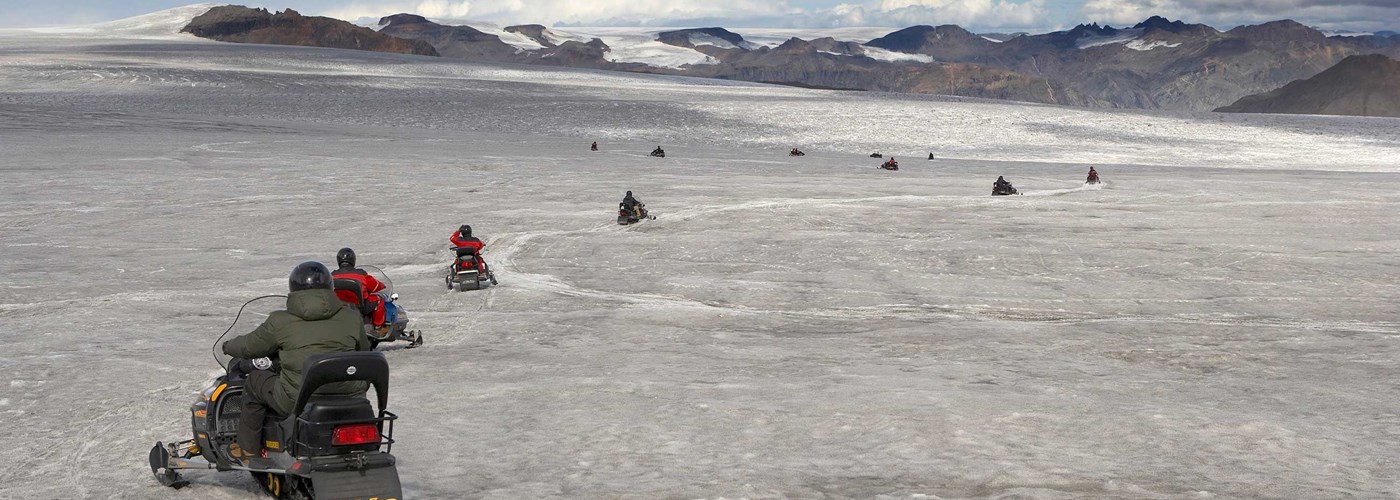THE LARGEST NATIONAL PARK IN ICELAND
Vatnajökull National Park, established in 2008, encompasses not only all of Vatnajökull glacier but also extensive surrounding areas.
These include the national parks previously existing at Skaftafell in the southwest, and Jökulsárgljúfur in the north, so that today's park covers 13% of Iceland and ranks among the largest national parks in Europe.
Despite a large part of the national park being underneath the icecap of the glacier Vatnajökull, its landscape is diverse, predominantly due to the interplay of volcanic activity and glaciers. Few other places in the world exhibit the effects of such a wide range of natural phenomena as Vatnajökull, where the battle between ice and fire still rages, created by the combined forces of rivers, glacial ice, and volcanic and geothermal activity.
Nowhere in Iceland, with the exception of Mýrdalsjökull glacier, does more precipitation fall, or more water drain to the sea than on the south side of Vatnajökull. In fact, so much water is currently stored in Vatnajökull that the Icelandic river with the greatest flow, Ölfusá, would need over 200 years to carry this quantity of water to sea.
The south side of Vatnajökull is characterised by many high, majestic mountain ridges, with outlet glaciers descending between them onto the lowlands. The southernmost part of the glacier envelops the central volcano Öræfajökull and Iceland's highest peak, Hvannadalshnúkur. Sheltered by the high ice, the vegetated oasis of Skaftafell overlooks the black sands deposited to its west by the river Skeiðará. These sands are mostly composed of ash which stems from the frequent eruptions at Grímsvötn and is brought to the coast by glacial floods.
Located in the northern part of Vatnajökull National Park, Jökulsárgljúfur takes its name from a canyon formed by Iceland's second longest river, Jökulsá á Fjöllum. Enormous catastrophic glacial bursts are believed to have carved out the deep ravines and rocky basins, the most famous of which is Ásbyrgi. Not far from Ásbyrgi is Dettifoss waterfall, the most powerful waterfall in Europe, with 500 cubic metres per second plummeting over the edge. A hiking trail goes along the canyon from Dettifoss to Ásbyrgi.

Hólmatungur is an expanse of rich vegetation in the Jökulsárgljúfur area and an area of sharp contrasts: crystal clear streams and bubbling brooks cross the land before emptying into the raging, chocolate-coloured torrent. A delicate balance of flora and fauna thrives under the protection of cliffs and scree slopes. The footpath between Hljóðaklettar and Hólmatungur, alongside Jökulsá á Fjöllum, is among the most beautiful in Iceland.
The biggest glacial lagoon of its kind in Iceland is also located close by the Vatnajökull National Park. Easily accessible off Route 1, between Skaftafell and Höfn, the Jökulsárlón Glacial Lagoon formed as a result of a glacial retreat, when the Breiðamerkurjökull glacier began to recede away from the Atlantic, resulting in a picturesque lake where icebergs float.
NATIONAL PARKS IN ICELAND
Þingvellir
Þingvellir is the national shrine of Iceland. It is a key location in Icelandic history as the oldest existing parliament in the world first assembled there in 930 AD. Þingvellir has for this reason been designated a UNESCO World Heritage Site. Besides being a location of historical significance, Þingvellir is also protected as a national park due to its unique geology and natural features.
Vatnajökull
Vatnajökull National Park, established in 2008, encompasses not only all of Vatnajökull glacier but also extensive surrounding areas, including Skaftafell in the southwest, and Jökulsárgljúfur in the north. The park covers 13% of Iceland, making it one of the largest national parks in Europe.


